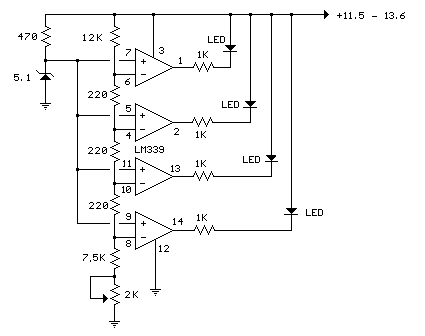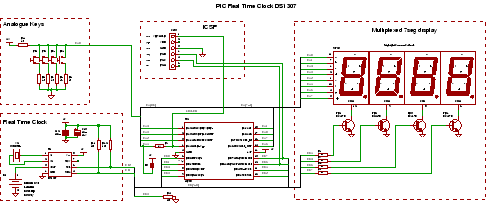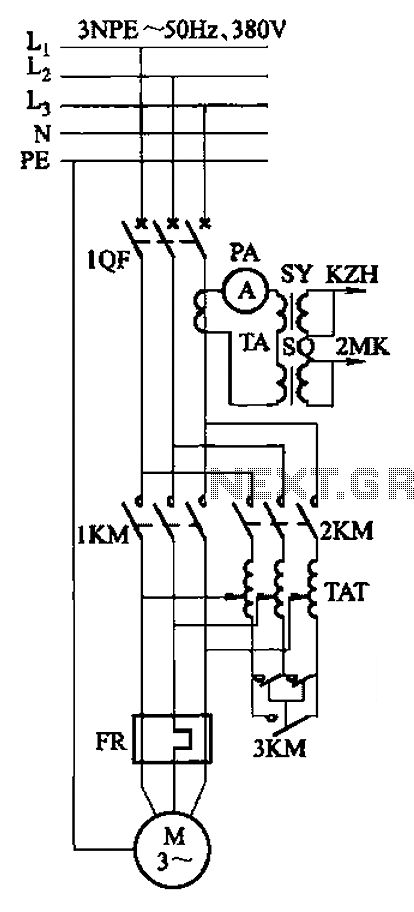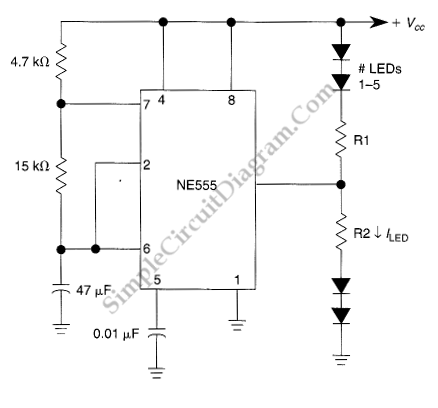
28 LED Clock Timer

This is a programmable clock timer circuit that utilizes individual LEDs to display hours and minutes. Twelve LEDs can be arranged in a circle to represent the twelve hours of a clock face, while an additional twelve LEDs can be positioned in an outer circle to indicate five-minute intervals within each hour. Four additional LEDs are employed to show one to four minutes of time within each five-minute interval.
The programmable clock timer circuit is designed to provide a visual representation of time using light-emitting diodes (LEDs). The core of the circuit consists of a microcontroller that manages the timing functions and controls the illumination of the LEDs. The microcontroller is programmed to keep track of the current time and to update the LED indicators accordingly.
The inner circle of twelve LEDs represents the hours, with each LED corresponding to one hour on a standard clock face. When the hour changes, the microcontroller activates the LED corresponding to the current hour while turning off the previous hour's LED. This creates a clear visual indication of the current hour.
The outer circle contains twelve additional LEDs, each representing five-minute intervals. As time progresses, the microcontroller keeps track of the minutes and activates the appropriate LED in the outer circle to indicate the current five-minute block. This allows for easy reading of the time in five-minute increments.
Furthermore, within each five-minute interval, four additional LEDs are employed to represent the specific minutes. These LEDs are activated sequentially, illuminating one LED for each minute that passes within the current five-minute block. This feature enhances the precision of the timer, allowing users to see not only the hour and five-minute intervals but also the exact minute.
Power for the circuit can be supplied by a standard DC power source, and appropriate voltage regulation should be implemented to ensure the safe operation of the microcontroller and LEDs. Resistors are also necessary to limit the current flowing through each LED, preventing damage and ensuring longevity.
In summary, this programmable clock timer circuit offers an effective and visually appealing method for displaying time through the use of multiple LEDs, providing a comprehensive overview of hours, five-minute intervals, and minute details. The design is suitable for various applications, including educational tools, decorative clocks, or timers in electronic projects.This is a programmable clock timer circuit that uses individual LEDs to indicate hours and minutes. 12 LEDs can be arranged in a circle to represent the 12 hours of a clock face and an additional 12 LEDs can be arranged in an outer circle to indicate 5 minute intervals within the hour. 4 additional LEDs are used to indicate 1 to 4 minutes of time within each 5 minute interval 🔗 External reference
The programmable clock timer circuit is designed to provide a visual representation of time using light-emitting diodes (LEDs). The core of the circuit consists of a microcontroller that manages the timing functions and controls the illumination of the LEDs. The microcontroller is programmed to keep track of the current time and to update the LED indicators accordingly.
The inner circle of twelve LEDs represents the hours, with each LED corresponding to one hour on a standard clock face. When the hour changes, the microcontroller activates the LED corresponding to the current hour while turning off the previous hour's LED. This creates a clear visual indication of the current hour.
The outer circle contains twelve additional LEDs, each representing five-minute intervals. As time progresses, the microcontroller keeps track of the minutes and activates the appropriate LED in the outer circle to indicate the current five-minute block. This allows for easy reading of the time in five-minute increments.
Furthermore, within each five-minute interval, four additional LEDs are employed to represent the specific minutes. These LEDs are activated sequentially, illuminating one LED for each minute that passes within the current five-minute block. This feature enhances the precision of the timer, allowing users to see not only the hour and five-minute intervals but also the exact minute.
Power for the circuit can be supplied by a standard DC power source, and appropriate voltage regulation should be implemented to ensure the safe operation of the microcontroller and LEDs. Resistors are also necessary to limit the current flowing through each LED, preventing damage and ensuring longevity.
In summary, this programmable clock timer circuit offers an effective and visually appealing method for displaying time through the use of multiple LEDs, providing a comprehensive overview of hours, five-minute intervals, and minute details. The design is suitable for various applications, including educational tools, decorative clocks, or timers in electronic projects.This is a programmable clock timer circuit that uses individual LEDs to indicate hours and minutes. 12 LEDs can be arranged in a circle to represent the 12 hours of a clock face and an additional 12 LEDs can be arranged in an outer circle to indicate 5 minute intervals within the hour. 4 additional LEDs are used to indicate 1 to 4 minutes of time within each 5 minute interval 🔗 External reference





